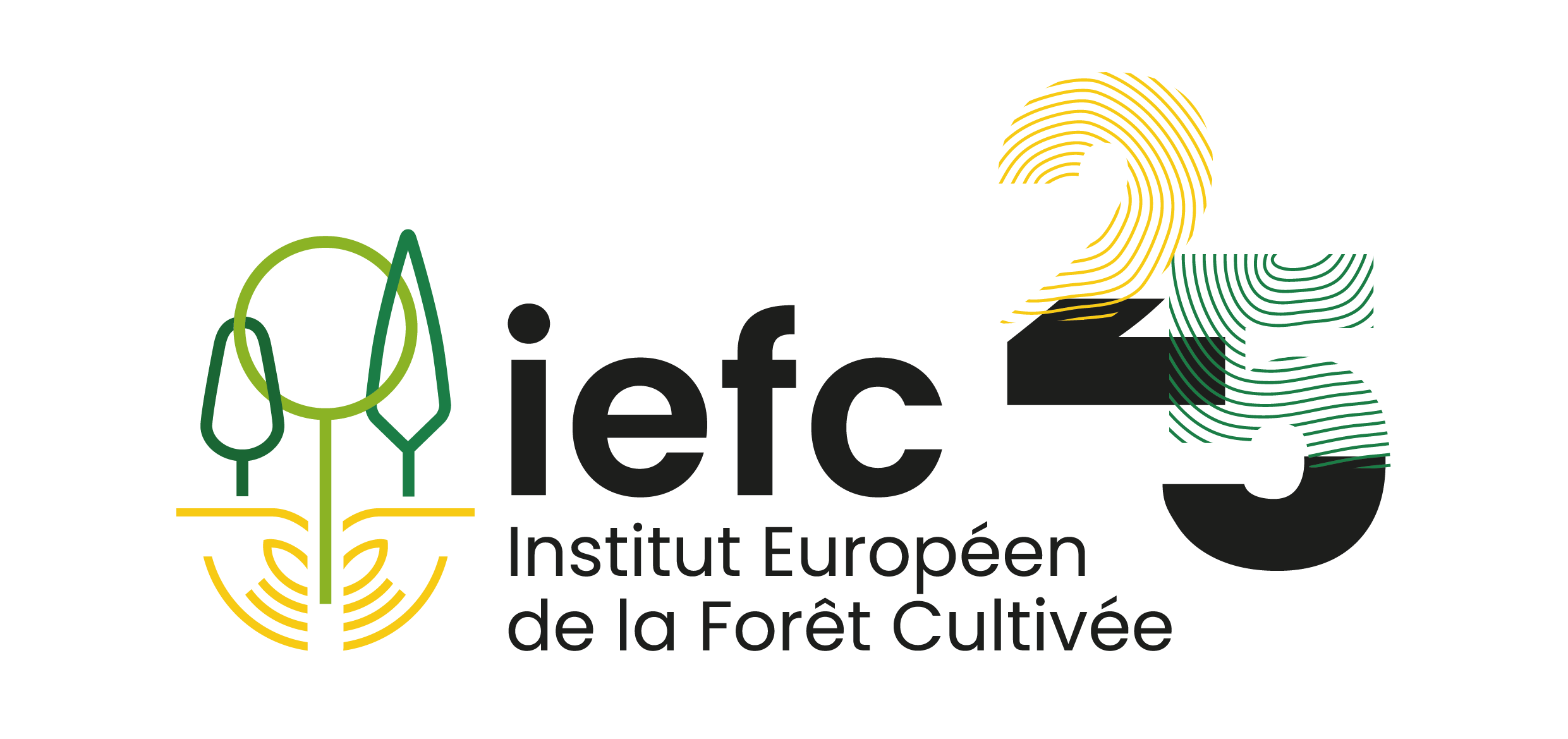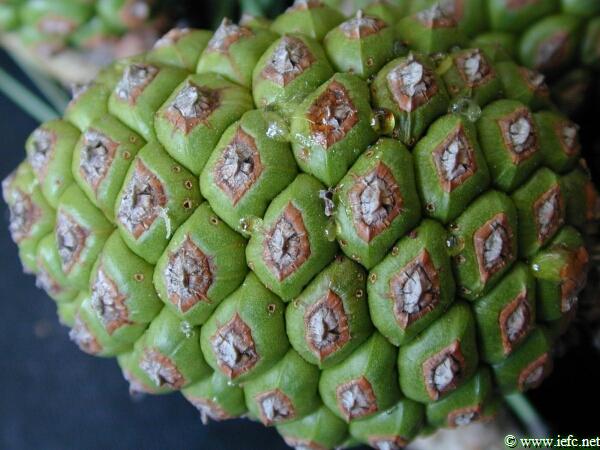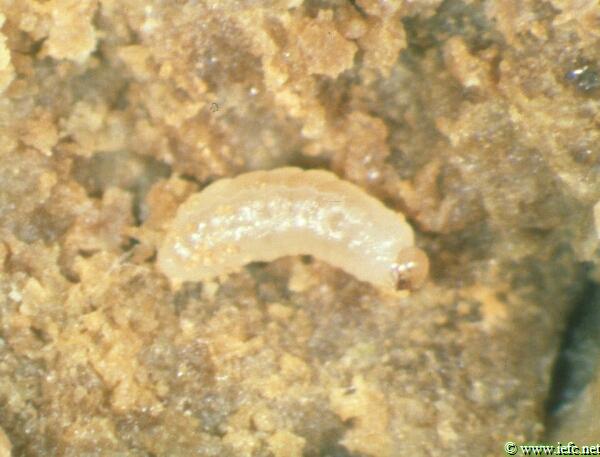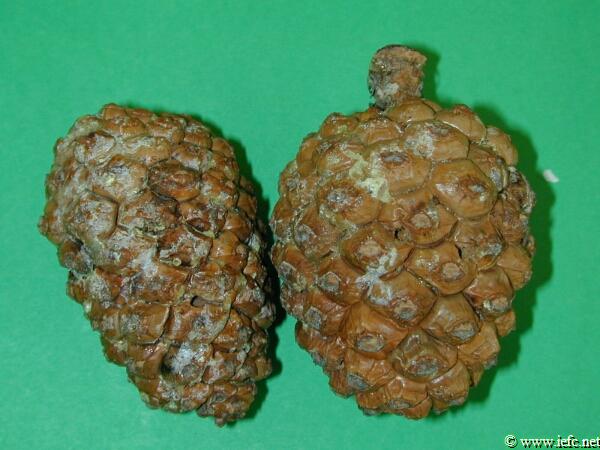Pine cone weevil
Pissodes validirostris (C.R. Sahlberg) (Coleoptera, Curculionidae)
Host tree
Several pine species: especially damaging on stone pine (Pinus pinea) in southern Europe, but also attacks many other species such as Scots (P. sylvestris), Black (P. nigra) Aleppo (P. halepensis), Maritime (P. pinaster) and Salzmann´s pine (P. nigra Salzmannii).
Identification
- In spring, presence of dark weevils with white and orange-yellow markings, feeding and egg-laying on the cones (Photo 1).
- Small punctures on the cone scales, some of them covered with a small cap of frass, observable on the cones in their last growing season (Photo 2).
- Inside the cones, deep larval tunnels filled with a fine, powdery dejection (summer/autumn).
- From May to September (and throughout the winter in cold climates), presence of legless, white larvae (up to 1 cm long) with a brown head, inside the cones (Photo 3). They differ from the caterpillars of Dioryctria mendacella , which have legs, are larger and coloured purplish-red.
- Dry, brown, less developed cones (smaller size, less prominent scales) often with resin exudation.
- Circular, neat emergence holes (2-3 mm in diameter) on the cone surface (Photo 4).
Damage
- Total seed loss in the attacked cones.
- Important economic losses in Stone pine cone crops in southern Europe.
Biology
- There is one generation per year in warm areas. In northern Europe and in altitude, one generation will take two years.
- Adult weevils overwinter in bark crevices at the base of pines; in early spring they climb to the crown to feed on twigs and later on the developing cones (April/May).
- In spring, several eggs are laid individually into punctures, made in the cones at the beginning of their final growing season.
- Larvae bore initially peripheral tunnels inside the cone and later gain deeper, damaging the cone axis and causing the cease of cone growth (May to September).
- Pupation occurs inside the cones; in southern and central Europe, most adults emerge in late summer and autumn and feed on the twigs before descending to overwinter. In colder areas, larvae overwinter and adults emerge in summer to oviposit the following year.
- The weevils are not very mobile and the attacks tend to reappear each year in the same stands and even on the same trees.
- Populations seem mainly influenced by starvation due to yearly fluctuations in cone abundance.
Risk factors
- In southern Europe, stone pines are preferred to other pines. In central and northern Europe, Scots pine is the preferred host.
Distribution
- All of Europe where pine species are present.
Pest management
Monitoring
- Observation of attacked cones during cone harvesting (autumn/winter).
Preventive measurements
Curative control
- Insecticide treatments are usually not recommended and, in most European countries, there are no insecticides registered against this pest.
- In seed orchards, aerial application of contact insecticides (deltamethrin) can be used, if allowed, against adults during twig feeding and egg-laying in spring. Timing of treatments by monitoring adult activity in early spring (observation of cones, net traps or band traps around the lower tree trunk).
Climate change
- The potential effect of climate change on this species is unclear because the weevil does not seem to be positively or negatively related to particular climatic or tree conditions. Population dynamics is rather driven by yearly fluctuations in cone abundance.




